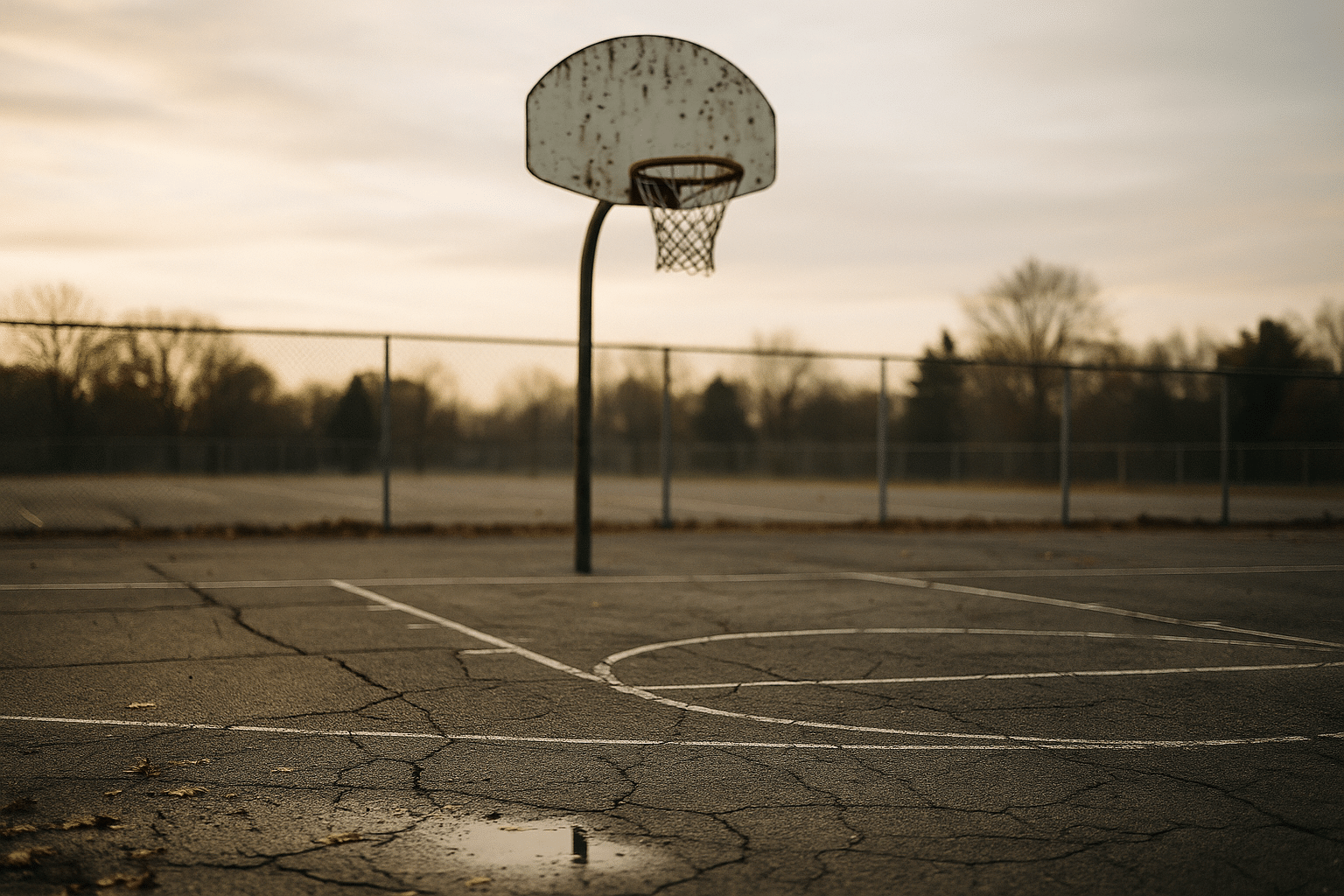
Exploring Basketball: Updates and Strategies in the Game
Introduction
Basketball blends creativity with calculation. It is a sport where a crisp pass can be as poetic as a well-timed metaphor and where a carefully planned set play blooms into a high-percentage shot. The game’s relevance continues to grow across continents, embraced in neighborhood parks, school programs, semi-professional circuits, and top-tier competitions. Its appeal is rooted in accessibility—just a hoop and a ball—yet its layers of strategy, athleticism, and teamwork reward curiosity and commitment. In recent years, the sport has accelerated toward pace-and-space principles, deeper shooting ranges, and data-informed decision-making, creating a modern landscape rich with opportunity for learners at every level.
Outline
– The evolving game: pace, space, and global growth
– Building fundamentals: shooting, ball handling, footwork, and defense
– Strategy in motion: offensive and defensive systems that win possessions
– Analytics, conditioning, and recovery: training smarter without shortcuts
– Conclusion and practical takeaways for players, coaches, and fans
The Evolving Game: Pace, Space, and Global Growth
Basketball today moves with the rhythm of a metronome set a notch faster than yesterday’s. Teams at many levels are increasing pace—measured by possessions per game—and favoring lineups with more shooting and playmaking. The shift has been driven by expected-value math (three points outweigh two when percentages are comparable), skill development (big players practicing guard skills), and rule interpretations that emphasize freedom of movement. The outcome: more spacing, more drive-and-kick action, and a premium on players who can dribble, pass, and shoot in a single possession.
One of the most visible trends is the rise in three-point volume. In several elite competitions, attempts from beyond the arc have climbed steadily over the past decade, and even youth and scholastic levels have mirrored this pattern with an emphasis on spacing and perimeter play. When a typical midrange shot may yield around 0.8–0.9 points per attempt, while a three at 35 percent yields roughly 1.05, the math nudges coaches to design offenses that generate open threes and shots at the rim. Corner threes—shorter distance and often created off penetration—gain special attention in set design.
Positionless play continues to redefine roles. Versatile forwards now initiate offense, centers space to the perimeter, and guards post smaller defenders when matchups permit. This flexibility fuels switch-heavy defenses and five-out offenses that stretch help rotations to a breaking point. Meanwhile, rule refinements—such as stricter interpretations against tactical fouling in transition or hand-checking—encourage fluidity and highlight individual skill. The result is a game that prizes players who move well without the ball, shoot accurately on the catch, and make rapid reads when defenses scramble.
Global growth reshapes the talent pipeline. International tournaments inspire stylistic exchanges, blending crisp ball movement, cutting, and screening with high-tempo transition play. Women’s basketball has also gained broader visibility, with increased pace and spacing paralleling wider adoption of analytics-informed strategies. Across community programs, there is a push for inclusive participation and fundamentals-first coaching, ensuring new generations learn footwork and decision-making before leaning too heavily on contested perimeter shots.
Key developments to watch:
– Increasing pace and space across multiple levels
– Emphasis on pick-and-roll reads, dribble handoffs, and off-ball cutting
– Growing value of lineup versatility and switchable defenders
– Data-influenced shot selection favoring threes and rim attempts
– Expanded global exchange of tactics and skill development philosophies
Building Fundamentals: Shooting, Ball Handling, Footwork, and Defense
The foundation of basketball rests on four interlocking pillars: shooting, ball handling, footwork, and defense. Mastering them is less about flashy moves and more about reliable mechanics under pressure. When repetition meets attention to detail, performance scales from practice to game night.
Shooting: Accuracy begins with balance and ends with a consistent release. Common cues include a stable base shoulder-width apart, knees soft, and the shooting elbow aligned under the ball. The off-hand guides without pushing; the follow-through finishes softly, wrist relaxed. Progressive training starts with form shooting close to the rim, then extends to catch-and-shoot from the elbows, corners, and slots. Adding movement—shuffle steps, flare cuts, and exit routes around screens—bridges the gap to live play. A smart progression might look like:
– 50 form shots near the rim focusing on arc and wrist snap
– 25 catch-and-shoot attempts per spot at midrange, then beyond the arc
– 20 shots off pin-downs or handoffs, emphasizing footwork into the shot
Ball handling: Effective dribbling is not about the highest dribble but the most purposeful one. Change of pace and change of direction (inside-out, hesitations, crossovers) create space. Drills should demand both hands, heads-up vision, and live reads. Pair each dribble move with a counter—if a defender shades to a crossover, pivot to an in-and-out or hesitation. For guards and forwards alike, strong handles enable better passing angles and safer entries into offensive sets.
Footwork: The quiet engine of advantage. Jump stops, stride stops, pivots (inside and outside foot), and controlled gathers convert chaos into control. Offensively, this means finishing through contact, avoiding travels on shot fakes, and establishing triple-threat balance. Defensively, proper slides, hip turns, and closeout angles keep offensive threats in front while contesting without fouling.
Defense: The hallmark of sustainable success. On-ball principles—stance, distance, hand placement—reduce drive lanes. Off-ball accountability—tagging rollers, stunting at drivers, and early help—turns five individuals into a synchronized unit. Communication is the glue: players should call out screens, matchups, and switches in real time. Rebounding finishes possessions; securing the ball with two hands and chin-high posture is as vital as the initial stop.
Practical fundamentals checklist:
– Shooting: balance, alignment, soft release, consistent arc
– Handling: ambidexterity, head up, change of pace, counters
– Footwork: pivots, controlled stops, smart gathers
– Defense: stance, positioning, communication, rebounding
Strategy in Motion: Offensive and Defensive Systems That Win Possessions
Modern strategy flows from the strengths of personnel and the math of efficient shots. Offensively, systems often blend pick-and-roll, dribble handoff, and motion concepts into adaptable playbooks. The goal: force two defenders to guard the ball, then punish rotations.
Pick-and-roll remains a cornerstone. With a high screen, ball handlers attack downhill while the screener rolls, pops, or slips based on coverage. Against drop coverage, pull-up jumpers and pocket passes thrive; versus switches, isolations or quick slips create mismatches; against aggressive hedges, short rolls open the middle for a 4-on-3 decision-maker. Teams frequently pair pick-and-roll with weak-side actions—like a flare or a back screen—so help defenders are reluctant to collapse.
Dribble handoffs and five-out spacing accentuate flow. Hand-offs position the ball handler at speed, turning corners quickly with shooters spaced in the corners and wings. Five-out keeps the lane open for cuts, backdoors, and drive-and-kick sequences. Horns alignments (two players at the elbows) create inside-out threats, while baseline screening actions free corner shooters or cutters. In special situations—after timeouts or baseline inbound plays—coaches script misdirection to generate a clean look in under three seconds, such as a back screen followed by a flare for a catch-and-shoot.
On defense, the emphasis is on limiting paint touches and threes while minimizing fouls. Schemes include:
– Switching: simplifies matchups but demands strong post defense and rebounding
– Drop coverage: protects the rim and invites contested pull-ups
– Hedge/Recover or Show: disrupts the handler’s rhythm but stresses rotations
– Zone variations: 2-3 or 1-3-1 looks to force perimeter decision-making and disrupt timing
Choosing a scheme depends on personnel. A roster with long, mobile forwards might switch more; a rim-protecting center can anchor drop coverage. Communication determines success: nail-the-gap help on drives, early tags on rollers, and high hands to contest while avoiding fouls. Rotations must be pre-planned and practiced in shell drills, so players trust the chain of help and recovery.
Game management ties strategy together. Substitution patterns protect energy levels; two-for-one end-of-quarter situations squeeze extra possessions; and timeouts are leveraged to stop runs or set up ATO (after-timeout) counters. The most effective playbooks feel like living documents: they retain their core identity while evolving to exploit opponent tendencies discovered via film and scouting.
Analytics, Conditioning, and Recovery: Training Smarter Without Shortcuts
Analytics has sharpened decision-making without replacing intuition. Shot charts, lineup data, and player-tracking metrics help coaches quantify what the eye test suggests. A few core insights have become mainstream: prioritize shots at the rim and open threes, reduce long twos unless a player owns exceptional accuracy, and win the turnover and rebounding battles to create extra possessions. Effective field goal percentage (which weights threes more than twos) and true shooting percentage (which incorporates free throws) offer cleaner pictures of efficiency than raw field goal percentages.
Expected-value thinking guides drills. For example, a 35 percent three-pointer yields about 1.05 points per attempt, while a 45 percent long two yields 0.9 points. That gap, multiplied over dozens of shots, can decide outcomes. Still, context matters: late-clock midrange looks, post touches to draw fouls, and short-roll floaters all have a place when they punish specific coverages.
Player development now integrates strength, mobility, and movement quality. Foundational lifts (squats, hip hinges, presses, pulls) build resilience; plyometrics develop elastic power for rebounding and shot-blocking; and lateral agility drills refine defensive slides. Many programs periodize training into blocks—accumulation (volume), intensification (load), and taper (freshness). Conditioning aims for the energy systems used in games: repeated sprints, change-of-direction intervals, and mixed aerobic-anaerobic sessions. A weekly rhythm might reserve one or two higher-load days, interspersed with skill sessions emphasizing shooting volume while managing cumulative fatigue.
Recovery is performance insurance. Sleep anchors adaptation; consistent 7–9 hours can stabilize reaction time and decision-making. Hydration and balanced nutrition support everything from joint health to focus. Simple practices—post-session mobility work, light aerobic flushes, and periodic deload weeks—help sustain output across a season. Monitoring perceived exertion and minor aches can prevent overuse injuries; when in doubt, small adjustments early often avoid larger problems later.
Film study complements the numbers. Clips spotlight patterns that stats alone cannot: late help, missed tag responsibilities, or hesitation on open catch-and-shoots. The most useful dashboards blend both worlds: a chart flags a hot zone, while video reveals how it was created—was it a flare screen, early drag screen in transition, or an offensive rebound kick-out?
Practical tools to prioritize:
– Shot quality tracking (location, contest level, time on the clock)
– Possession-based goals (rebound margin, turnover rate, free throw rate)
– Movement quality checks (hip-ankle mobility, landing mechanics)
– Recovery habits (sleep consistency, hydration, light mobility daily)
Conclusion and Practical Takeaways for Players, Coaches, and Fans
Basketball’s heartbeat is steady: space the floor, share the ball, defend with cohesion, and treasure each possession. The recent wave of pace, spacing, and skill versatility has sharpened the sport without erasing its essence. Whether you are a newcomer lacing up for the first time or a seasoned coach refining a playbook, the path forward is remarkably consistent—build fundamentals, choose strategies that fit your people, and let data inform rather than dictate.
For players: make daily deposits into your skill bank. Ten extra minutes of form shooting, five minutes of tight-handle work, and a few reps of pivot foot discipline accumulate quickly. Track your shots by location to understand where you are most efficient. Defensively, commit to communication; a loud, early call on a screen can prevent a breakdown before it starts.
For coaches: begin with what your roster can do right now. If you have multiple shooters, build five-out actions with cuts and dribble handoffs. If you have a strong roller, lean into pick-and-roll with weak-side movement to occupy help. On defense, decide your identity—switching to flatten drives, drop to protect the paint, or zone to disrupt rhythm—and practice the rotations until they are second nature. Integrate simple analytics: track paint touches, corner three attempts, and turnover differential each game.
For fans and parents: enjoy the craft. Notice how a well-timed back screen creates an easy layup or how a hedge at the point of attack buys time for a guard to recover. Celebrate hustle plays—rebounding out of area, deflections, and walling up at the rim—which often swing momentum more than highlight finishes.
Closing thoughts:
– Fundamentals unlock strategy; strategy multiplies fundamentals
– Intelligent shot selection over time is a sustainable edge
– Consistent recovery habits are a competitive advantage
– Communication converts five athletes into one unit
The game keeps evolving, but its throughline remains: precise skills, clear plans, and a shared purpose. Keep learning, keep adjusting, and let the court be your classroom.


